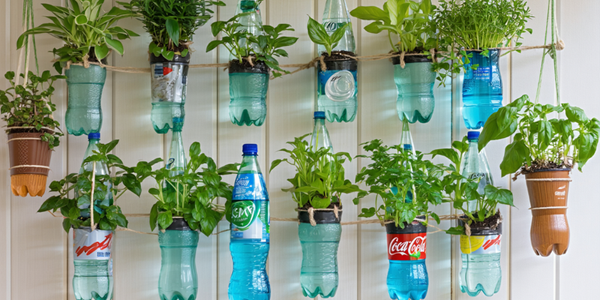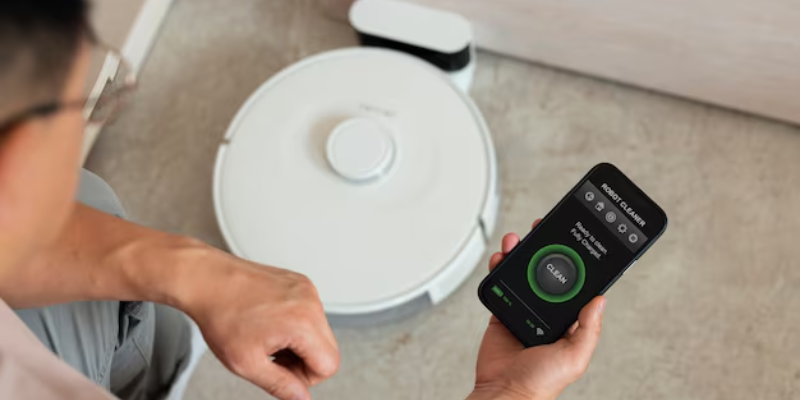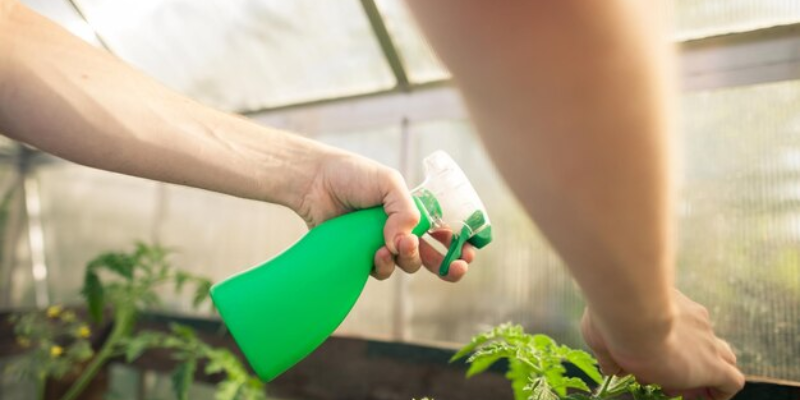12 Genius Vertical Garden Hacks To Transform Your Backyard
Are you a passionate gardener with a limited space in your backyard? Do you want to upgrade your backyard with leafy green look? Vertical gardening has the answer for you. With vertical gardening, you can use your limited space productively and have plenty of vegetables and herbs to decorate your dining table. Here, we will look into 12 vertical gardens that transform your backyard into a food haven, utilizing household items and smart DIY tips. There is no need to stress about buying unhealthy groceries from the market anymore as you can grow them yourself. Buckle up, and let's dive into this vertical gardening adventure.
1. Repurpose A Wooden Pallet
Old pallets are a perfect choice for establishing the base for vertical gardens. With a few changes, one can transform the pallet into a beautiful multiple-tiered garden for small plants, herbs, and flowers. Secure the fabric on the back and bottom of the pallet to keep the soil in place, add potting soil, and then plant. This is best for a few stems of basil, mint, and thyme or some flowers, like sprigs or flowers.

2. Decorating Walls With Hanging Shoe Organizers For Green Walls
Shoe organizers are incredibly bland but great for making tiny spaces green. Their numerous compartments are ideal for growing herbs or small types of succulents. Place the organizer on a fence or a wall, put dirt into each pocket, and plant seeds or seedlings there. Best for Acnts example: Powdery mildew on herbs, succulents, and strawberries.
3. PVC Pipe Planters
PVC pipes are cheap and easy to manage; hence, they are suitable for vertical gardening. Pipes can also be placed one upon the other or installed vertically on a wall. Boor holes at a certain distance with each hole you fill with the soil and plant whichever plant you want. Best for Strawberries, lettuces, and ornamental plants of a smaller size.
4. Build A Ladder Shelf Garden
Old ladders can look like fantastic multi-level planters when they're just lying around the garden doing nothing. Tie floating shelves on the ladder rungs or put each potted plant on a single step to create another level. If required, wash and paint the ladder before rearranging your plants in the order of elevation.
5. Build A Free-Standing Living Green Wall With Interchangeable Planters
The design of these modular planter systems enables homeowners to swap sections easily if they require a unique living wall plan. First, Screw the modular planter sections to the wall that you want to use for mounting. After that, fill each section with plants. Some tall leaves and flowers should be arranged creatively for a perfect blend.
6. Rain Gutters For Easy Garden Rows
The rain gutters create neat, easy-to-maintain row-like structures ideal for growing small plants. Position them vertically in a row along a fence or wall with some distance between them of at most a few inches. Drill holes within the gutter bottoms, install, and refill with soil and the plant. Best for Salad vegetables or leaves, spinach, pepper, beans, or strawberries.
7. Mason Jar Wall Gardens
When growing herbs in-house, mason jars are perfect, and each herb can be grown separately in its jar. Hang them on a board to give your wall appointments an elegant antique look. Screw hooks on each corner of the wooden board to help secure the jars; fill the rest of the jars with the soil and plant the herbs or succulents. Basil is a bushy plant, mint, and many other small-leaved herbs.
8. Upcycled Plastic Bottles
Empty soft drink bottles can be rinsed and reused as planters or hung vertically if you are looking for an inexpensive way of gardening. Take a portion of the bottle, put it on the soil and your plants, and fix them in a row against any wall. Best for Small flowers, lettuce, and herbs.

9. Tiered Hanging Planters
Vertical garden pots enable several plants to be placed in one suspension structure, thereby using much space and coming up with an appealing design. Buy or create a hanging planter set and add plants to each tier. Best for: Annual flowering plants and trailing herbs, including oregano and thymus.
10. Bamboo Frame Planters
Another technique utilizing a green material for the construction of climbers and trailing plant support is bamboo frames. Fix it at the bottom and ensure it stands vertically; fill small pots to be placed at the bottom or position some plants to climb up the frame. It is suitable for Climbing plants, vines, creepers, tomatoes, and similar plants.
11. Repurpose An Old Shutter
Please do not throw away outdated window shutters because they can be recycled as plant holders; you only have to fit small pots between the shutters. If required, clean and paint the shutter; hang this shutter on a wall astride a pot in every crevice of the shutter. Best for Perennials, herbs, spider plants, small ferns, and trailing succulents.
12. Vertical Herb Spiral
A vertical herb spiral also works decoratively and practically, growing many plants in a circle or spiral at once. Lay down the rocks or bricks to construct the spiral; place soil and plant your herbs on the spiral sections. This method is best for vegetables that prefer specific watering levels; for example, rosemary at the top is better because it barely needs water, while parsley is planted at the bottom.
Are You Prepared To Change Your Backyard With Vertical Gardening ?
Vertical gardening offers gardeners countless opportunities to cultivate plants in a small territory. That sounds cool, right? With these genius hacks, anyone can grow fresh herbs and flowers, if not veggies, right in their backyard or small space. There's no time to grab some tools and construct your vertical garden design!





